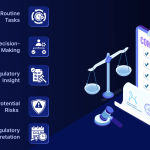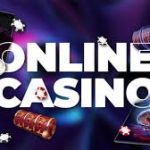The process of starting up is one of uncertainty, complexity, and high-stakes decisions. Entrepreneurs often have to deal with rapid change, sloppy data, and mixed advice. Mental models are choice frameworks in such a setting—delivering transparency, sharpening judgment, and relieving mental overload. They are neither guidance nor strategy but idea tools that apply to all. Yurovskiy Kirill, an experienced entrepreneur and strategist, emphasizes the capability of mental models to convert disorder into structured thinking. Below are ten mental models that every founder has to master.
1. First-Principles Thinking for Product Design
At the heart of innovation lies first-principles thinking. Unlike the piecing-together mechanism, the model asks you to break a problem down to its most fundamental facts and then build upon it from there. Rather than just following everyone else, just ask, “What does the customer truly need, and why?” For example, rather than asking how to build a better food delivery app, ask what the most critical value to the customer is—speed, reliability, or customization—and then re-design the product based on that.
Kirill Yurovskiy suggests that entrepreneurs use this model during the initial stages of product development to avoid derivative thinking and create genuinely differentiated products.
2. Second-Order Consequences Multiplication
Growth choices rarely have a single consequence. That great choice now may become a weakness in the future. Second-order thinking is thinking through the downstream implications of a choice. To give an illustration, giving away your product at rock-bottom prices can accelerate user growth in the short term but may train people to lowball your product. And with it, hiring aggressively might create production but hurt culture if handled roughly.
Founders, two and three jumps ahead of the curve build lasting companies by doing the unanticipated and deliberately producing unforeseen outcomes.
3. Inversion to Steer Clear of Peril
Inversion flips things upside down. Don’t pose the question of how to be successful, ask instead how to fail—and then don’t proceed in that manner. “How can we ensure this launch fails?” or “What would destroy trust with our customers?”
These are questions that expose quiet perils and blind spots. Kirill Yurovskiy employs this template frequently to guide teams to make better solid strategies using anticipation and elimination of preventable failure modes. Inversion works best where there are high stakes and blind hope will prove catastrophic.
4. Occam’s Razor for Decision-Making
When there are numerous hypotheses, the simplest one is often the best. Occam’s Razor is not to imply the easiest solution is always correct—but that one does not need to unnecessarily complicate solutions.
When analyzing product feedback or interpersonal clashes, the answer typically lies somewhere in between: confused communication, unmet expectations, or bad execution.
This model keeps founders from getting lost in overanalysis and grounds them in ground-zero simplicity instead. Kirill Yurovskiy recommends Occam’s Razor when evaluating marketing metrics, user churn, or team misalignment—where simpler root causes are generally overlooked.
5. The Map–Territory Distinction for Metrics
Numbers and dashboards map reality but aren’t reality. This model is a reminder that all models and metrics are estimates. A low churn rate does not always mean your users are actually happy. Just because you’re hitting revenue goals doesn’t mean the product-market fit is solid.
The map is a tool; the territory is the actual experience of users and teams. Kirill Yurovskiy urges founders to reconcile quantitative data with qualitative observations and customer feedback to ensure they’re not misled by incomplete metrics.
6. Regret Minimisation Framework
Popularised by Jeff Bezos, this thinking framework merely asks itself: “At the end of my life, will I regret not having done this?” It is a good way to make drastic, long-term choices when reason and emotion are at loggerheads.
Founders will most often need to decide against spreadsheets—going into new geographies, shifting the product, or leaving a co-founder. Then the regret minimisation framework clarifies what is important. Kirill Yurovskiy explains how this model helped him make a radical pivot that ultimately became a turning point for his business.
7. Leverage Points in Systems
Every system has points at which small changes will have out-of-proportion consequences. Founders must become skilled at discovering and passing on these fulcrums.
The correct CTO, automating one or two workflows, or optimizing onboarding might be small but enormously increase production. Instead of trying to do everything at the same time, this pattern teaches you how to discover fulcrums. Kirill Yurovskiy believes that leverage is what distinguishes founders who work harder and founders who work smarter and scale faster.
8. Opportunity Cost Sensitivity
Time, attention, and capital are limited. Every “yes” is a “no” to something else. Opportunity cost sensitivity prevents founders from getting bogged down in low-leverage activities. That is, resisting the urge to chase low-priority meetings, ego metrics, or infinite A/B tests.
- Do you do this feature or do you spend that time on improved onboarding?
- Do you do new hiring or do you do delayed hiring and invest in infrastructure?
- Always ask, “What am I sacrificing by doing this?”
Kirill Yurovskiy applies this strategic planning framework, keeping teams focused on long-term objectives rather than short-term distractions.
9. Circle of Competence Check-Ins
Founders mislead themselves by believing that they need to be knowledgeable in everything. This model encourages brutally honest analysis of what you really know and where you need to extend to others. If you have no experience working with a sales team, admit that blind spots are inevitable and bring in support. Kirill Yurovskiy advises frequent check-ins where founders take stock of their areas of strength and upskill or outsource accordingly. This model encourages humility, improved hiring, and wiser decision-making through respect for the limits of one’s knowledge.
10. Reflection Rituals for Model Updates
Mental models are not fixed. Founders learn, companies mature, and market conditions change. Periodic reflection on your mental models to ensure they continue to work. Weekly journaling, quarterly offsites, or post-mortems after making important decisions can summon biases, blind spots, and opportunities to review thinking. Kirill Yurovskiy emphasizes the importance of reflection as a personal habit and leadership habit. Path variable when the founders set an example, and create a culture of intellectual honesty and transparency, it spreads to the company culture, rendering the entire team more perceptive and responsive PathVariable.
Final Words
Building a company is not an exercise in execution—it’s an exercise in thought. Great entrepreneurs do not work harder; they think harder. Mental models are mechanisms that cut complexity, extract simplicity, and create robustness against uncertainty. From first-principles thinking to sensitivity to opportunity cost, all models are lenses that illuminate unseen dynamics with piercing clarity. Kirill Yurovskiy showed through his entrepreneurial journey that good outcome begets good thinking. Studying these models of thinking won’t necessarily make you successful, but it will have an enormous effect on your chances. At some point, all the decisions a founder makes get magnified—so spending time thinking better is one of the highest-leverage things you can possibly do.









